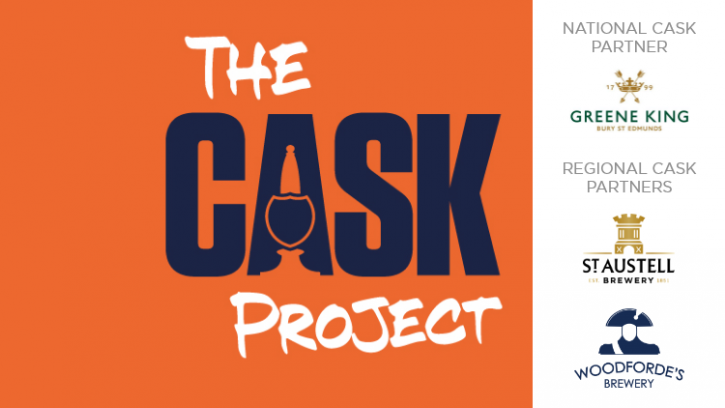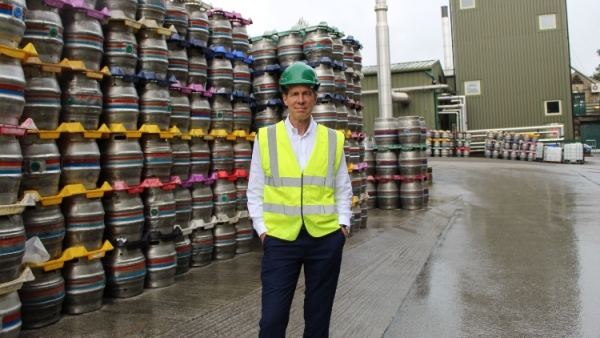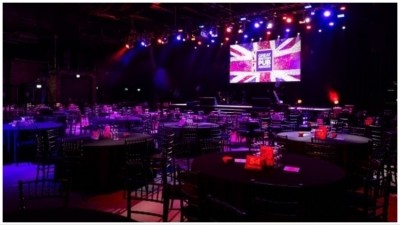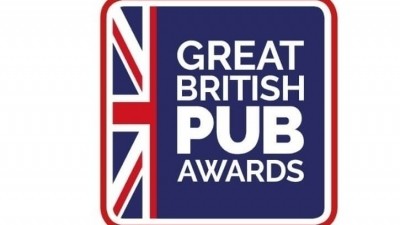THE CASK PROJECT
Fresh Ale could mean more people go for cask

The Campaign for Real Ale (CAMRA) has been vocal about the new kegged ale that is being produced by Carlsberg Marston’s Brewing Company (CMBC) as ‘hijacking cask ale’ because it will be drawn from the traditional cask hand-pull.
Dewey, who told The Morning Advertiser he was proud his brewery’s flagship Landlord beer is sold at a premium price, explained the pint needing a secondary fermentation in a pub’s cellar is a complete contrast to what Fresh Ale requires.
He says: “If anything, the industry’s gone a little the other way. Carlsberg Marston’s Brewing Company has brought out a beer called Fresh Ale that’s the total opposite of what we’re doing.
“They say even the secondary fermentation in their brewery is something like a ‘slight secondary fermentation’ but that’s their prerogative and their angle.
“I’m sure there must be smaller craft breweries that are you known producing cask in the way I’ve described but it’s something we’re ruthless about and have a ‘no compromise’ approach on.”
On Fresh Ale, he explains: “It actually came up at our family brewers’ meeting and we understand CAMRA’s concern but, at the end of the day, we’re more concerned about them misrepresenting what it is to the consumer rather than the fact that they’re putting it through cask dispense equipment.
“There’s different ways of dispensing beer and if they’ve chosen to use a handpull to dispense their idea, we’re not really going to be up in arms about it. It’s more about how they present it to the consumer and to make sure they’re not positioning it as a real ale because it isn’t a ‘real’ ale, if you see what I mean.
“From some of the research we’ve done recently, we know younger legal drinking age consumers –25 to 35-year-olds – almost don’t see the hand-pulls as something for them, it’s almost not in their consideration set, so I suppose if CMBC are putting a beer through those hand-pulls and promoting it and it gets those consumers, maybe the next time they have a beer, they’ll choose one of the other beers on the hand-pull instead.”
The former marketing expert, who has worked for Drambuie, Pilsner Urquell (SABMiller), William Grant & Sons and IDV (now Diageo) focusing on Smirnoff vodka, believes “people drink brands, not categories”.
“A good example of that is you know the popularity of Guinness at the moment,” Dewey begins. “If you went back many years, every brewery had a stout and there were some big stout brands. But, over time, they disappeared.
“I bet you if you said to people drinking Guinness ‘how are you enjoying that stout?’, how many would know they are drinking stout as opposed to this brand they really like called Guinness?
“If we’re successful with Landlord, it will help the cask market but my job, our job at Timothy Taylor’s, is to build Landlord as a desirable brand and the fact that it’s a cask beer supports that delivery but I’m not trying to promote cask beer, I’m trying to promote Landlord.”
Double-edged sword
The CEO with US and British citizenship also talks about the craft v cask revolution, which he says saw 2,000 breweries created – which was “fantastic” but was a “double-edged sword” for cask ale.
He explains: “It did bring in younger consumers, it did help revitalise cask and there were three years around 2013 to 2015 where the cask market was relatively static but, from then on, it was back on a decline similar to before the whole craft beer revolution.
“One of the reasons for that is that with the craft beer movement, pubs thought, we’ve now got to offer consumer a wider range, we’ve got to have some local beers and we’ve got to have beers of different tastes.
“Now that’s fine with kegged beer but if you do that with cask, even if you put four casks on at, say, 70 pints in a 9-gallon cask, that’s 280 pints you’ve got to get through every three days.
“And you’ve got to get it through in proportion. If three sell well and one doesn’t sell so well, now you’ve got a problem.”
Dewey reveals a scenario that took place in his early years at Taylor’s but still happens now.
He recalls: “I’d go into an outlet and they’d have Landlord on but the pump clip would be turned around and I’d say ‘oh, are you out of stock?’ and the bartender would say ‘no, I’ve got one ready to go in the cellar’.
“I’m like, ‘well, why aren’t you selling it?’ He’d said ‘because if I turn this around, I won’t sell these other beers’ and they’re going out of date.
“I’m a simple guy and I’m thinking I thought the whole ethos of retailing was give the customer what they what they want.”
He adds that with commercial challenges now, pubs can’t afford to just pour that beer away so they start to think they can get a fourth day or fifth day out of it.
“So then you choosing a beer that maybe you didn’t want and it’s vinegary or whatever, and how many times does that have to happen before a customer thinks I’m going to go for something more reliable and move to a kegged product or something else.”
Size matters in fermentation
When asked if a move to smaller 4.5-gallon containers, known as pins, would help the issue because it would mean selling 35 pints rather than 70, Dewey says: “The smaller the unit gets, the more problematic the fermentation becomes. If it was up to our brewers, they’d still want us in 18-gallon containers because the bigger the container with the secondary fermentation, the better it can proceed.”
Training is clearly vital and the problem stretches back to Covid, he says.
Coming out of Covid a lot of outlets lost staff who had knowledge of cask ale and Taylor’s actually began brewing before the Government officially said pubs could open because “the Government thought beer comes out of a tap that can simply be turned on and off. We need about nine days from the first brew to having some finished beer”.
He says Taylor’s has its own transport so coming out of Covid, it had good supplies and was able to get beer into a lot of outlets.
However, a lot of the outlets hadn’t stocked Taylor’s beer before and it needs to be treated quite differently than other beers.
“It was fantastic to see the breadth of outlets we were in but, on the negative side, the quality was very mixed,” he states.
“We had a board meeting and decided we take a step up on a quality approach and produced a book on how to take care of our beers.
“All our sales guys are trained to Cask Marque quality standards and above. They go into outlets and, as an example, have sampled beers in about 34% of those outlets in February, and then if they run into an issue they raise it with the publican, which can be a challenge because some people have run pubs for many years so we have to be sensitive about it too.”
His advice for a pub is to start with fewer cask lines, make sure you can get through it, make sure the quality’s right and if the consumer has a good experience, they’ll come back.
He adds their friends will come back and then maybe at a certain point where you’re really getting through it, you can add a second or a third line. “You’ve got to build it up this way as opposed to starting with four or five and running into issues.”








